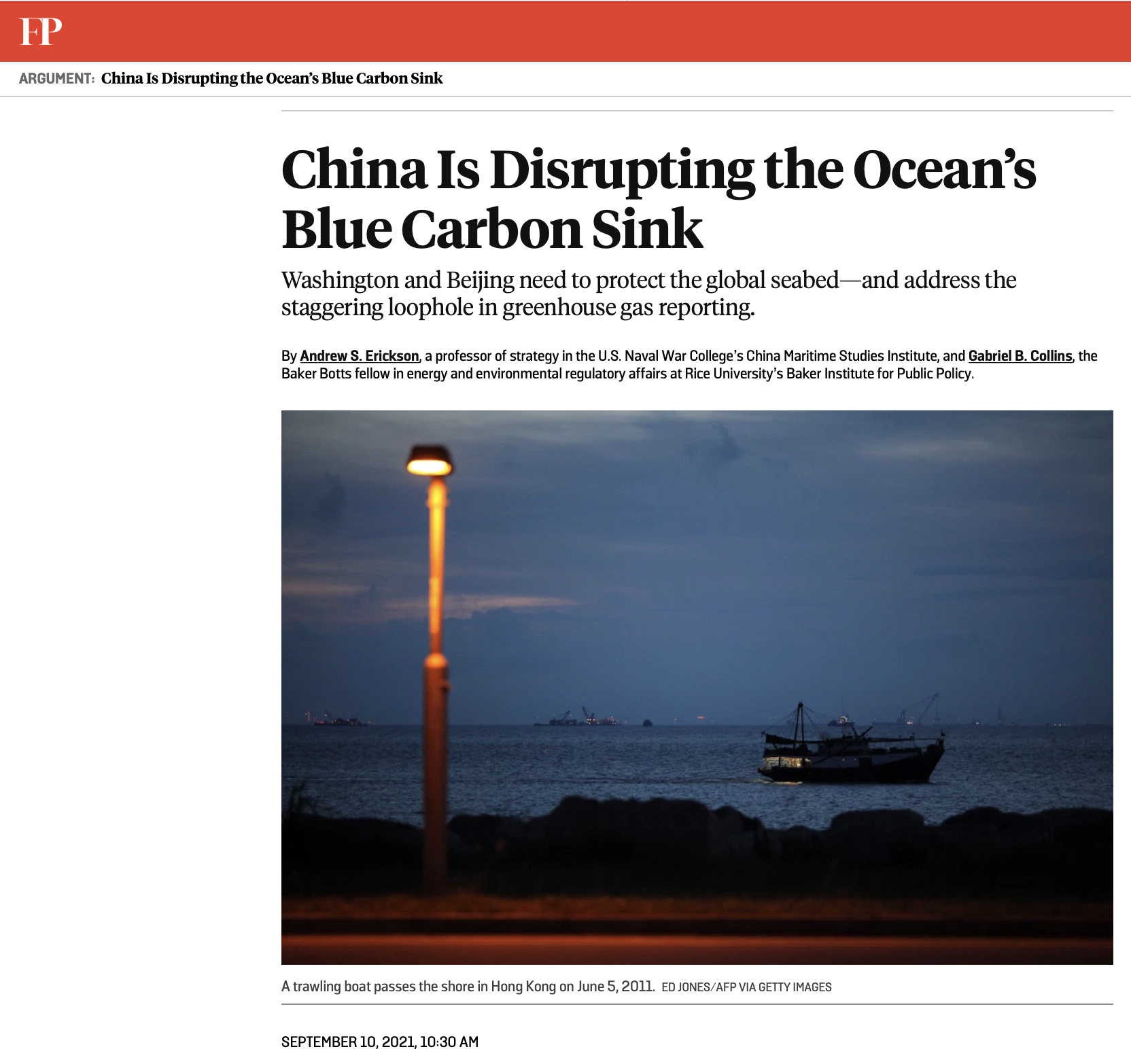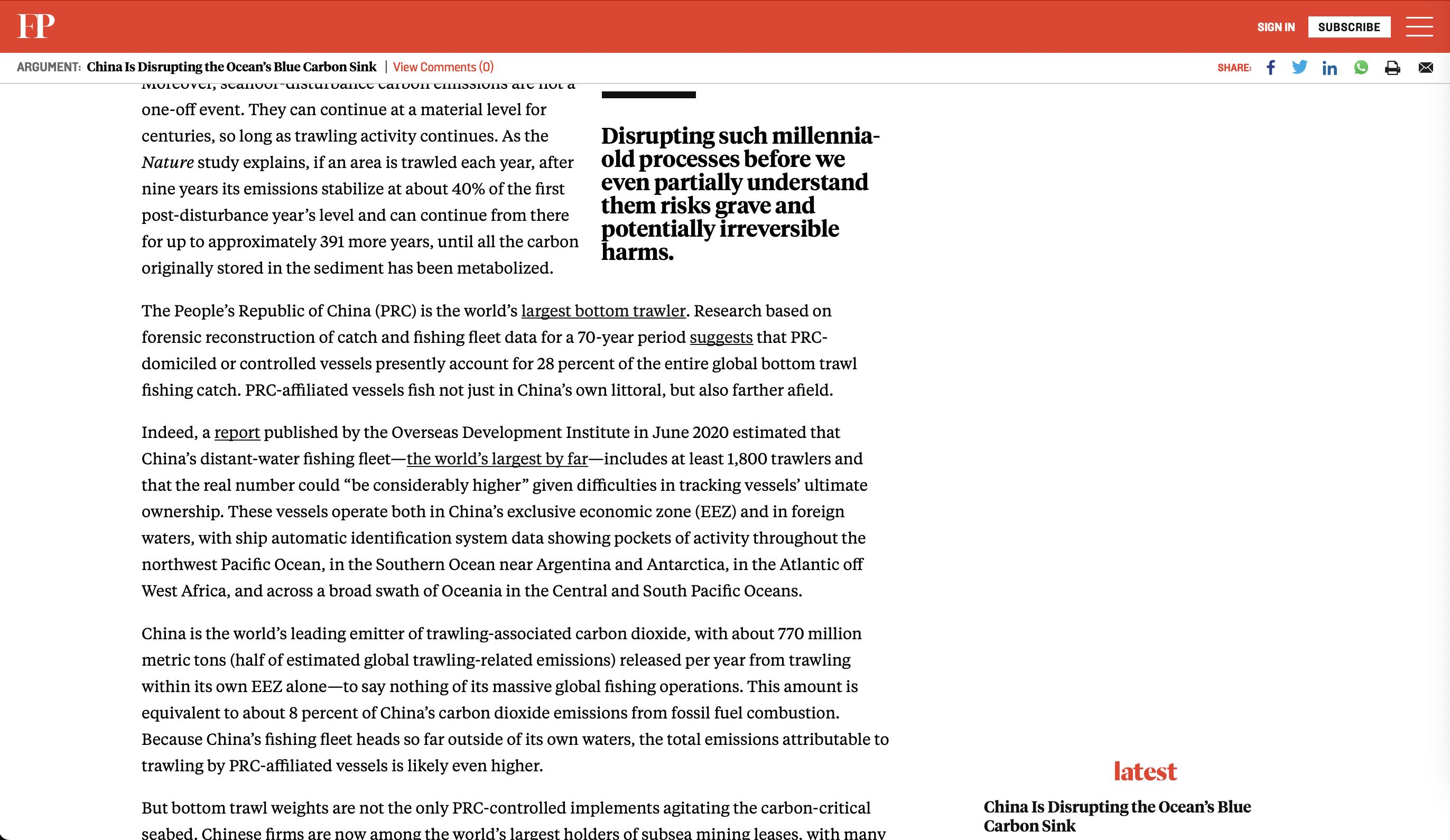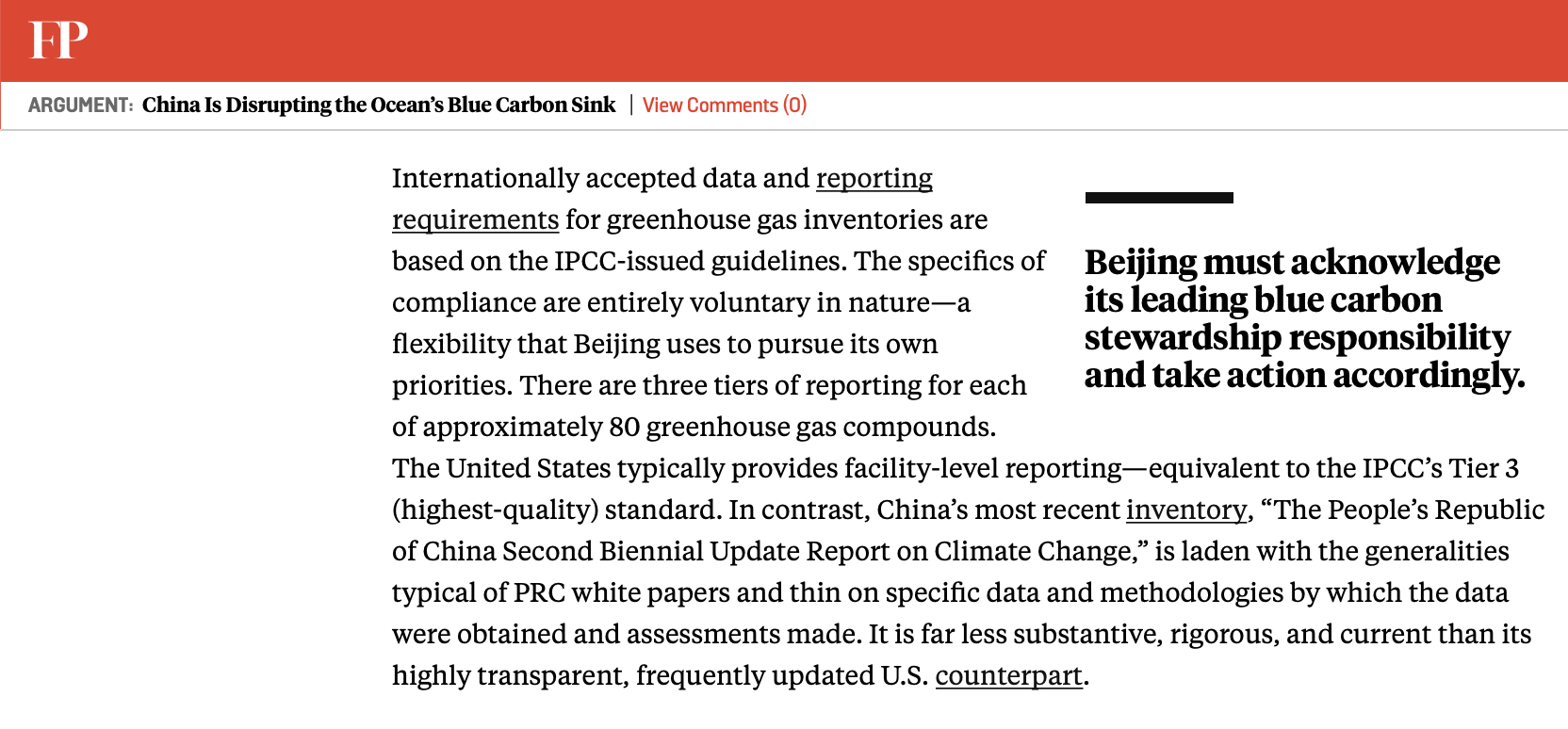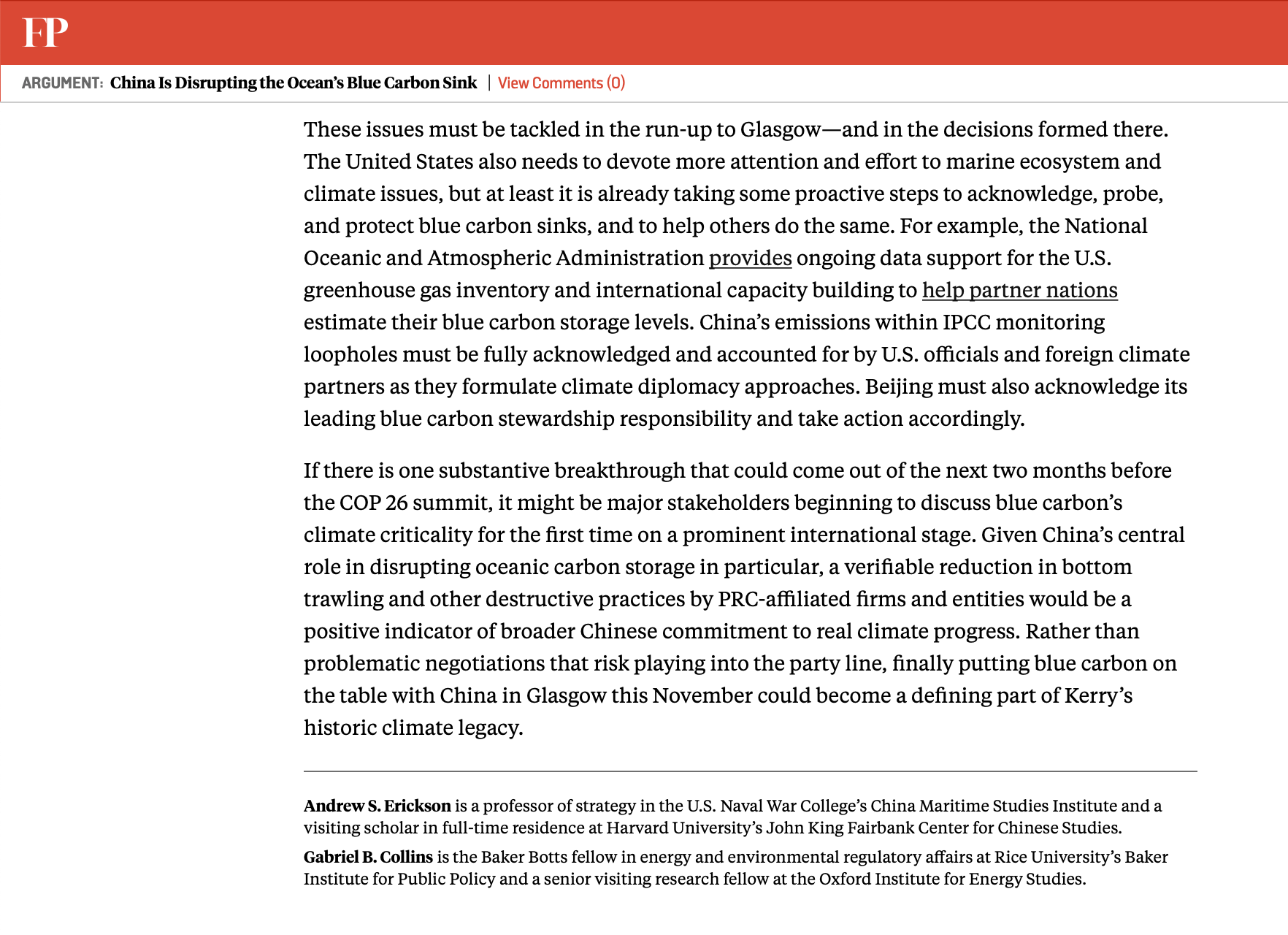China Is Disrupting the Ocean’s Blue Carbon Sink
Andrew S. Erickson and Gabriel B. Collins, “China Is Disrupting the Ocean’s Blue Carbon Sink,” Foreign Policy, 10 September 2021.
Washington and Beijing need to protect the global seabed—and address the staggering loophole in greenhouse gas reporting.
Bottom line: The U.S. Must Address China’s Blue Carbon Disruption
By Andrew S. Erickson, a professor of strategy in the U.S. Naval War College’s China Maritime Studies Institute, and Gabriel B. Collins, the Baker Botts fellow in energy and environmental regulatory affairs at Rice University’s Baker Institute for Public Policy.
As the United States and China prepare for the 26th U.N. Climate Change Conference of the Parties (COP 26) in Glasgow, Scotland, this November, U.S. special climate envoy John Kerry and his team should put “blue carbon”—carbon captured and stored by coastal and marine ecosystems—on the agenda for the first time. Blue carbon is a strategic global climate asset, but disruptions to it are currently not even systematically measured, much less reported, by leading disruptor China or any other nation. Kerry can publicly highlight the issue and begin making the case for factoring seabed and marine ecosystem disruption into the global climate policy equation.
The ocean covers 71 percent of the world’s surface, but less than 10 percent of the seafloor has been mapped using modern sonar, according to the National Oceanic and Atmospheric Administration. Wide-ranging salt marshes, mangroves, seagrass beds, and the ultra-deep abyssal seabed may be out of sight and mind for most people, but they are very much alive and keeping us all well—particularly by absorbing large quantities of carbon dioxide from the atmosphere and balancing critical ecological and climate systems. Disrupting such millennia-old processes before we even partially understand them risks grave and potentially irreversible harms.
A landmark study recently published in the scientific journal Nature underscores that “marine sediments are the largest pool of organic carbon on the planet,” with an estimated volume on the order of seven trillion metric tons—more than three times the cumulative anthropogenic carbon dioxide emissions since 1750. These carbon sequestration zones are subject to both a major existing threat (bottom trawl fishing) and an emerging one (seabed mining for polymetallic nodules). China plays a massive role in both activities. … … …









































